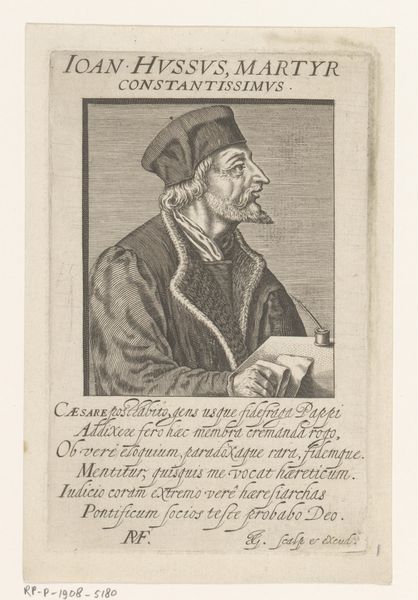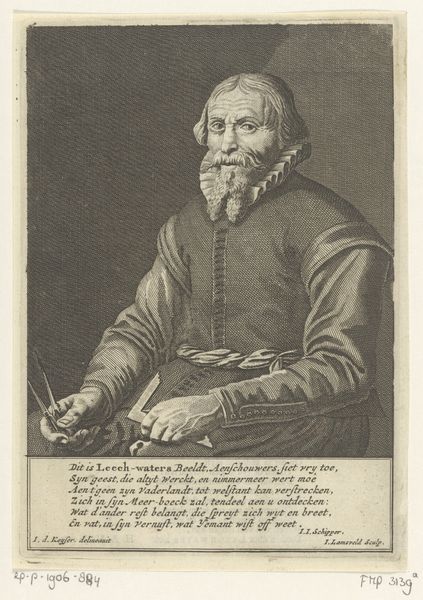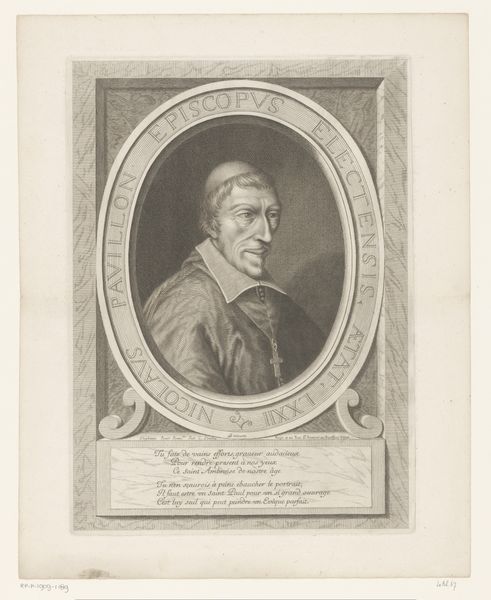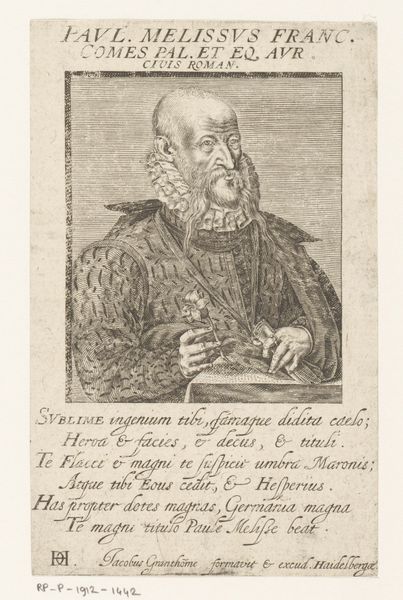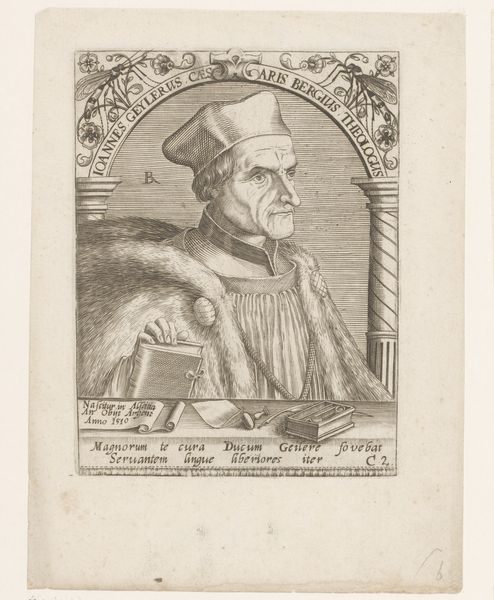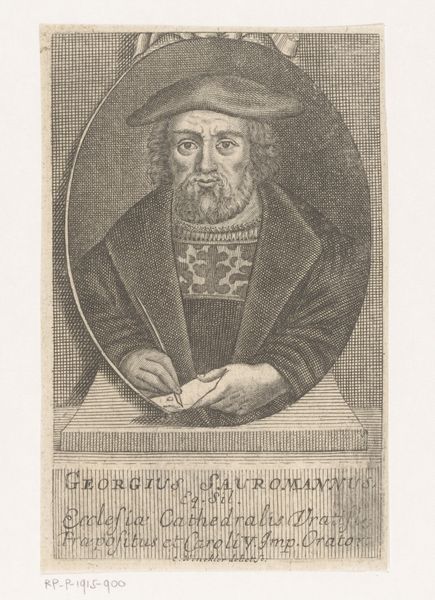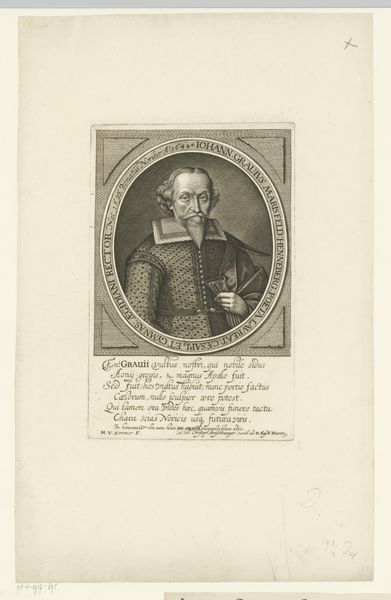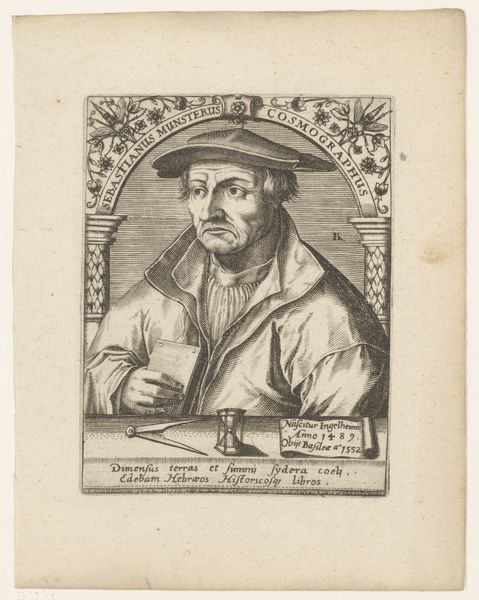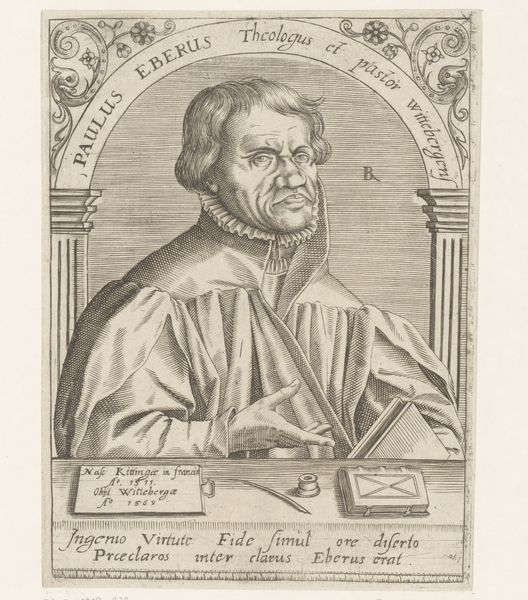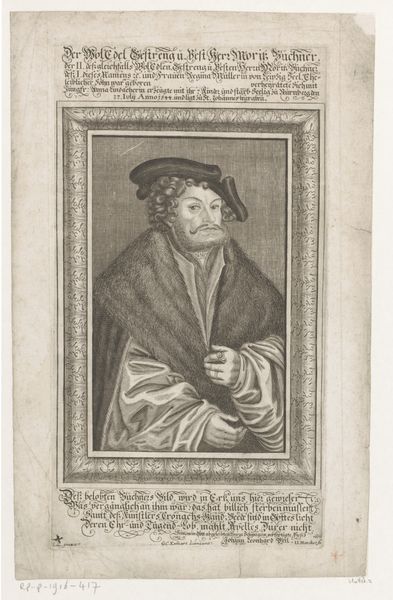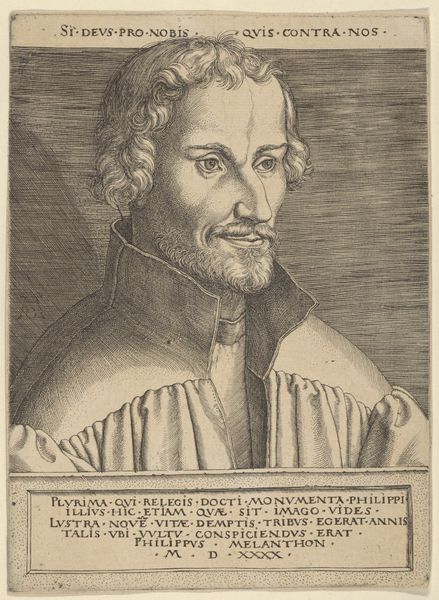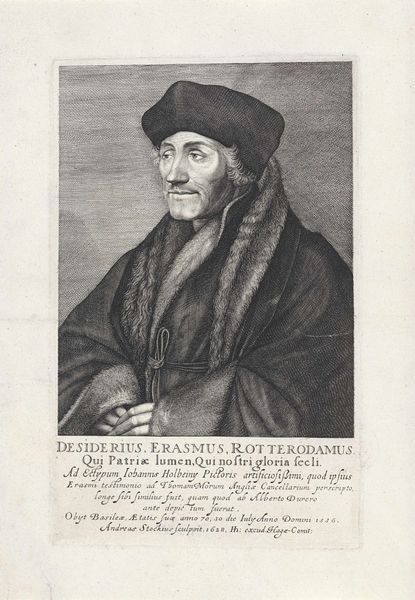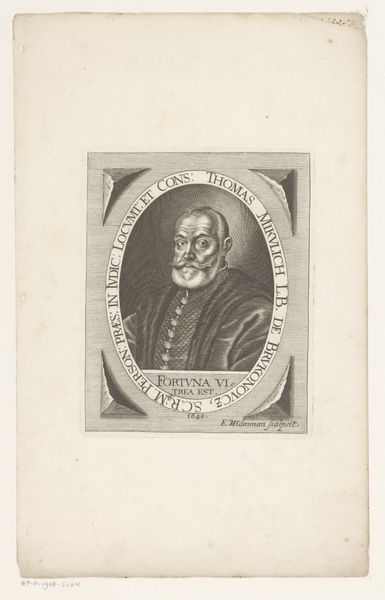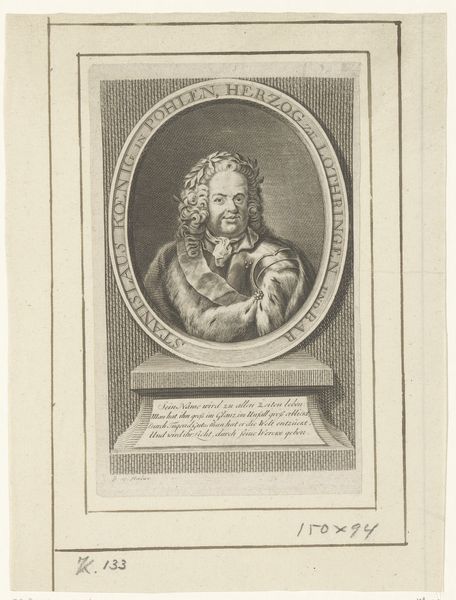
print, engraving
#
portrait
# print
#
11_renaissance
#
history-painting
#
northern-renaissance
#
engraving
Dimensions: height 137 mm, width 86 mm
Copyright: Rijks Museum: Open Domain
Editor: This is a print titled "Portret van Philipp Melanchthon," dating from around 1588 to 1622. It's an engraving housed here at the Rijksmuseum. There's a scholarly intensity to this image; he seems to be illuminated by the book in his hands. How do you interpret the symbols and imagery present here? Curator: The symbols resonate with layers of meaning. Observe Melanchthon’s fur-lined coat, a symbol of status, perhaps indicating worldly authority or scholarly eminence. Yet, his gaze seems averted, almost introverted, focused not on external power, but inner reflection. It asks, "What object does he hold?" Editor: It looks like a book. Curator: Exactly! The book, invariably, is the locus of knowledge, the written word as divine inscription. His touch is gentle, almost reverential, suggesting the sacredness of the text. This image underscores a transition from oral tradition to the textual authority. Editor: The inscription at the bottom – does that give more clues? Curator: Indeed. Although in Latin, one senses, "In darkness the skills and tongues lie buried," positioning him as a beacon, an “enlightenment figure”. It’s an appeal to history. And that leads one to question - how does he choose to be memorialized, and by whom? What stories are privileged in this carefully constructed portrait? Editor: So the print isn't just a portrait, but a constructed symbol meant to convey specific ideas about knowledge, reformation, and legacy. Curator: Precisely! Consider this visual language when assessing images from any era – from religious icons to political propaganda. Always ask yourself, “What meaning did the creator embed in their work, and what resonates across time?" Editor: This really changes how I view portraiture. It's fascinating to see the cultural weight symbols can carry and how that shapes our understanding.
Comments
No comments
Be the first to comment and join the conversation on the ultimate creative platform.
